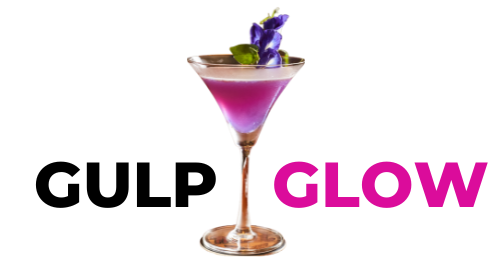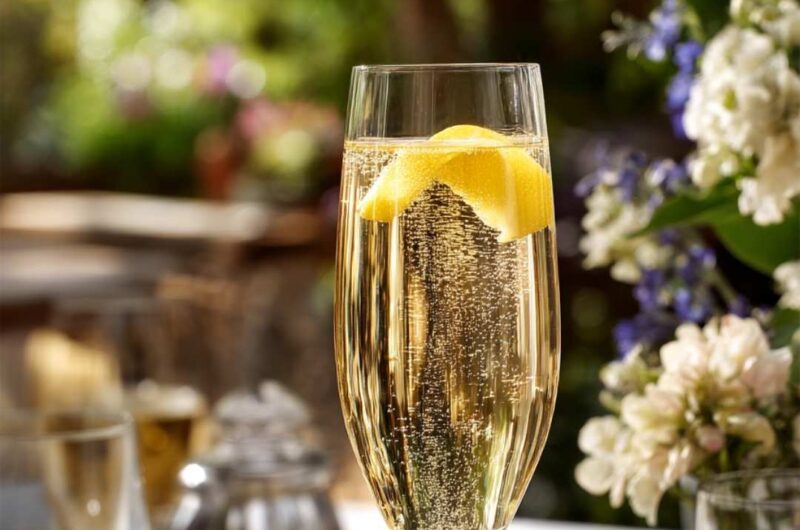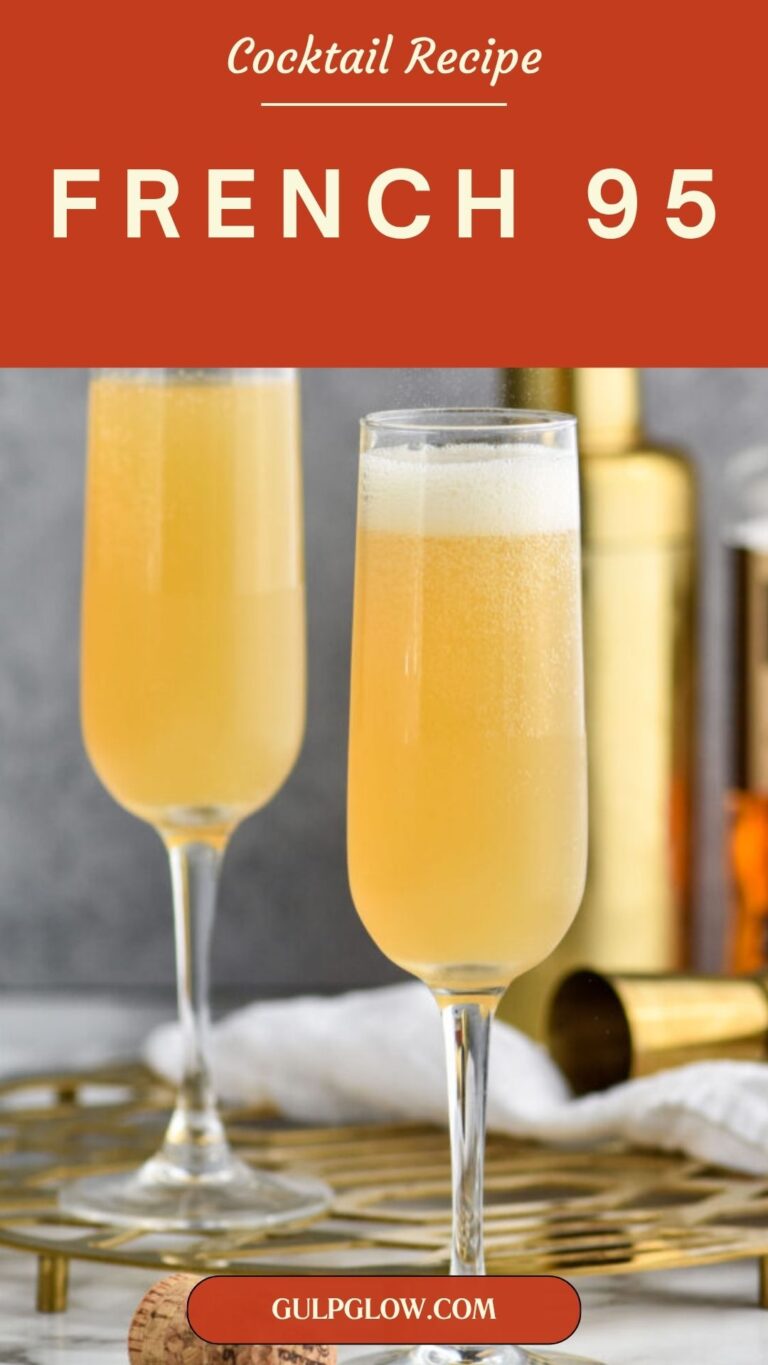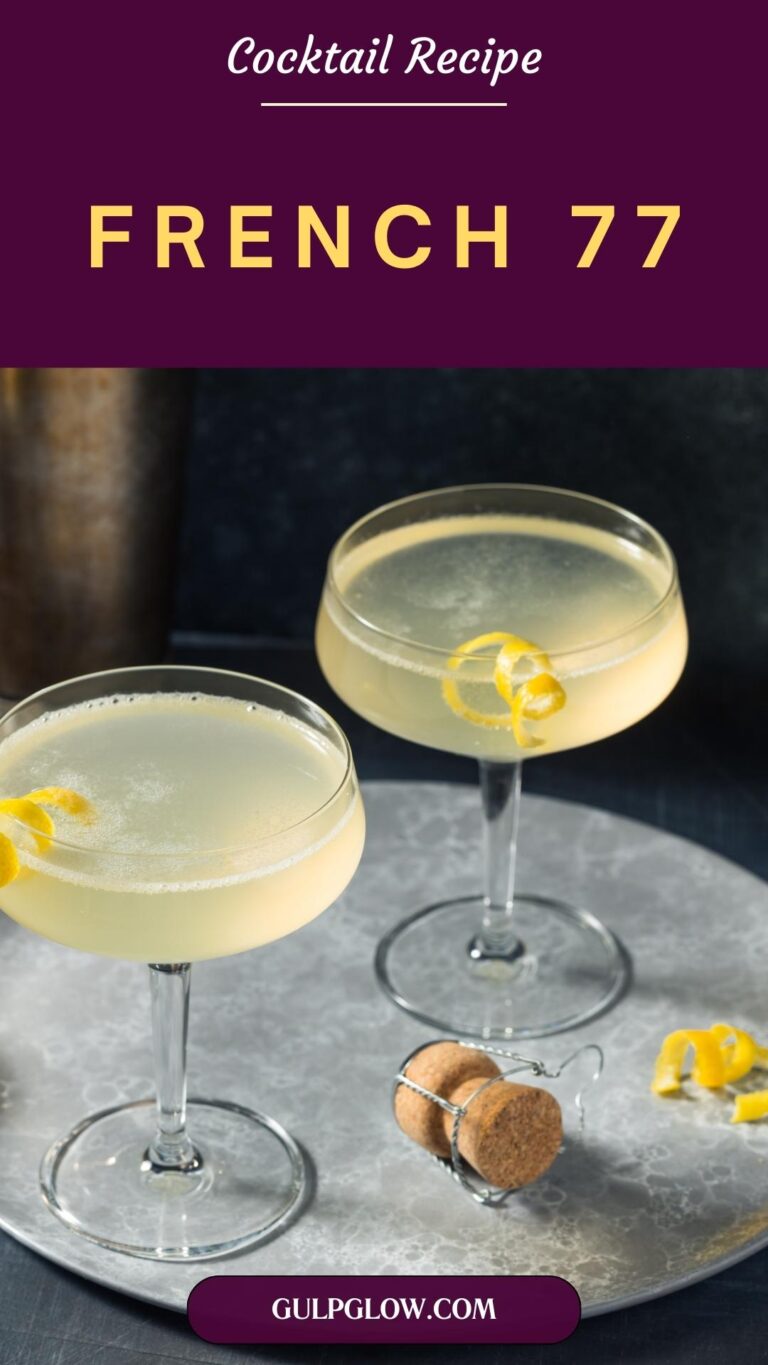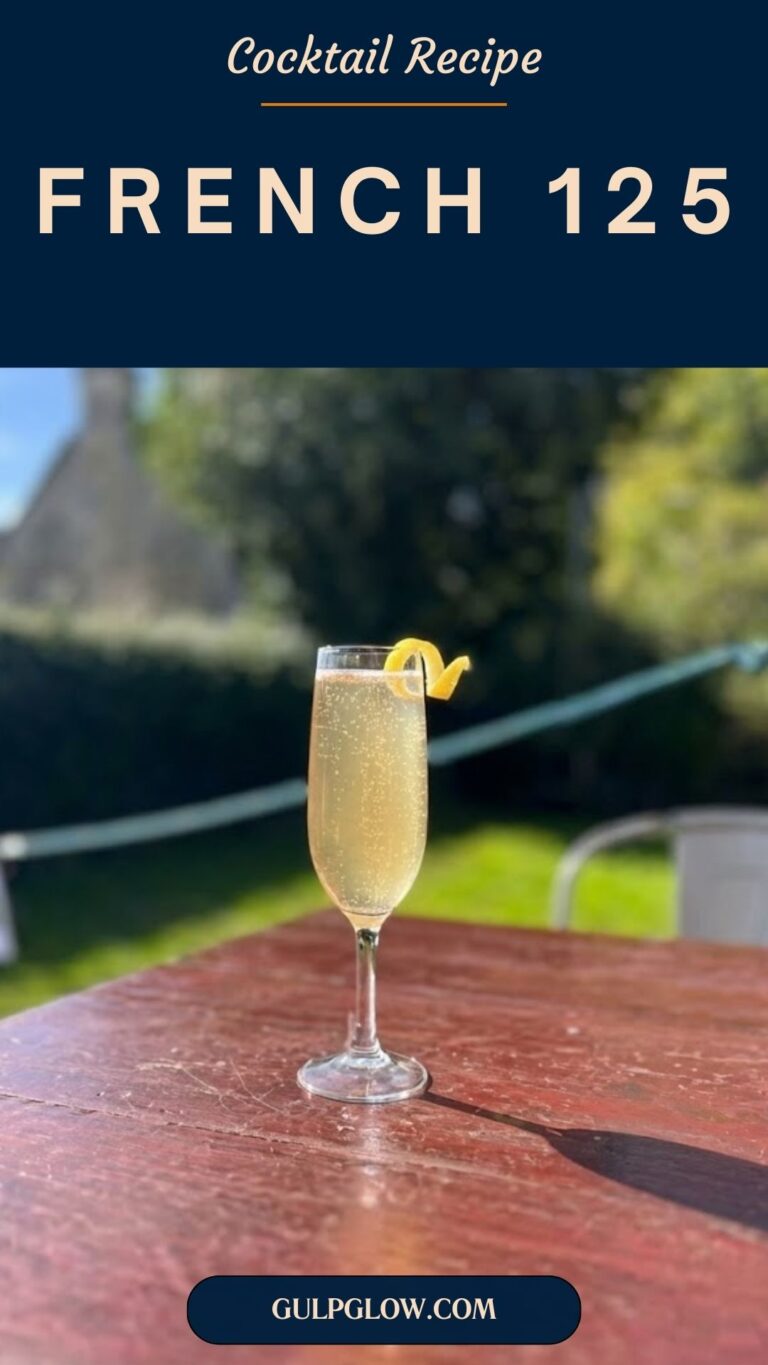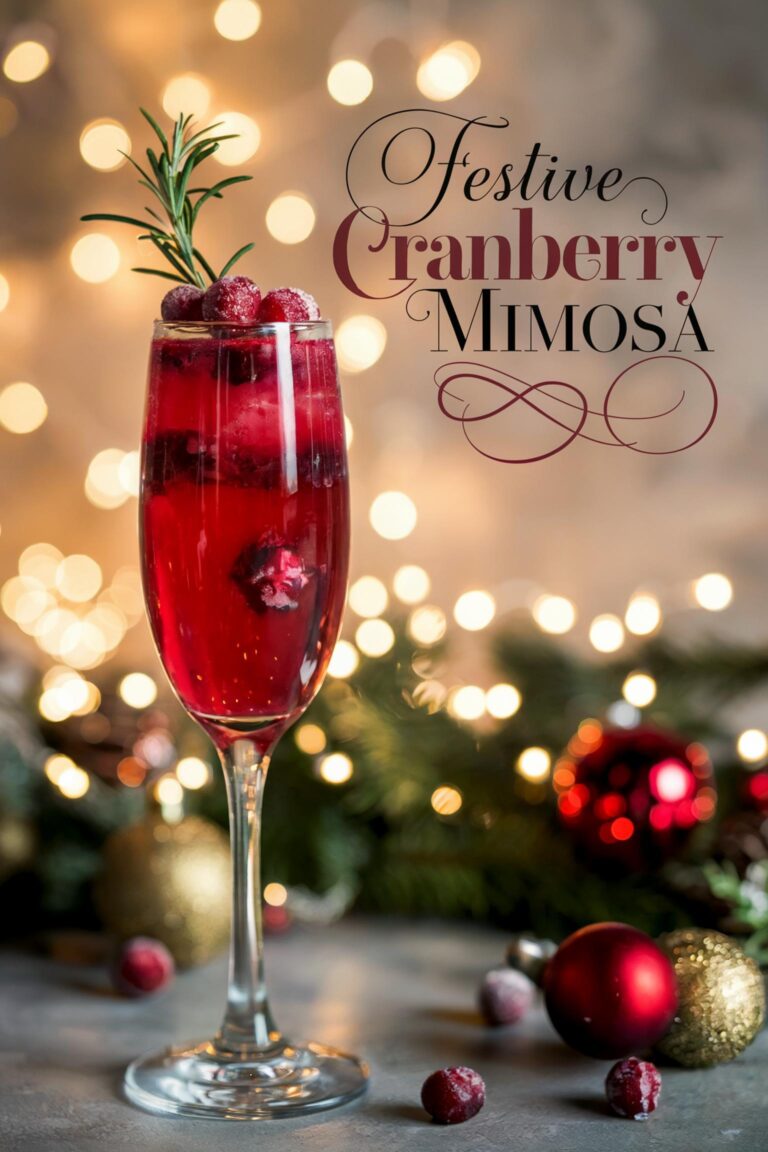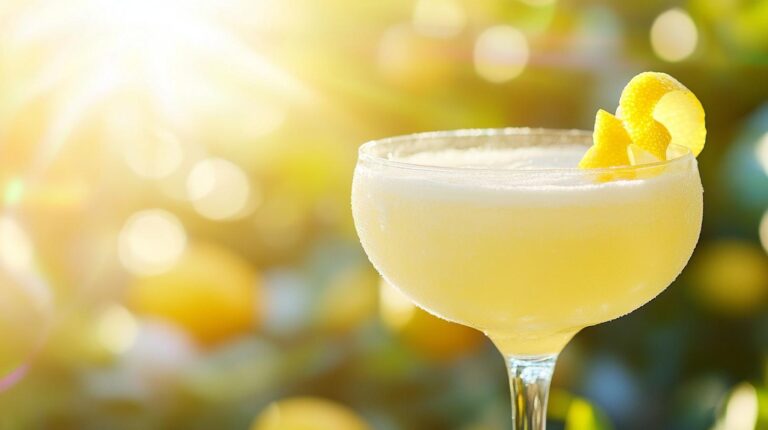St. Germain Cocktail: Effervescence with a Floral French Twist
The St. Germain Champagne Cocktail is elegance in a flute. A luminous, lightly floral blend of elderflower liqueur and sparkling wine, this cocktail is delicate, celebratory, and undeniably chic. It’s the kind of drink that whispers sophistication with every rising bubble—perfect for weddings, brunches, or evenings that call for something a little special.
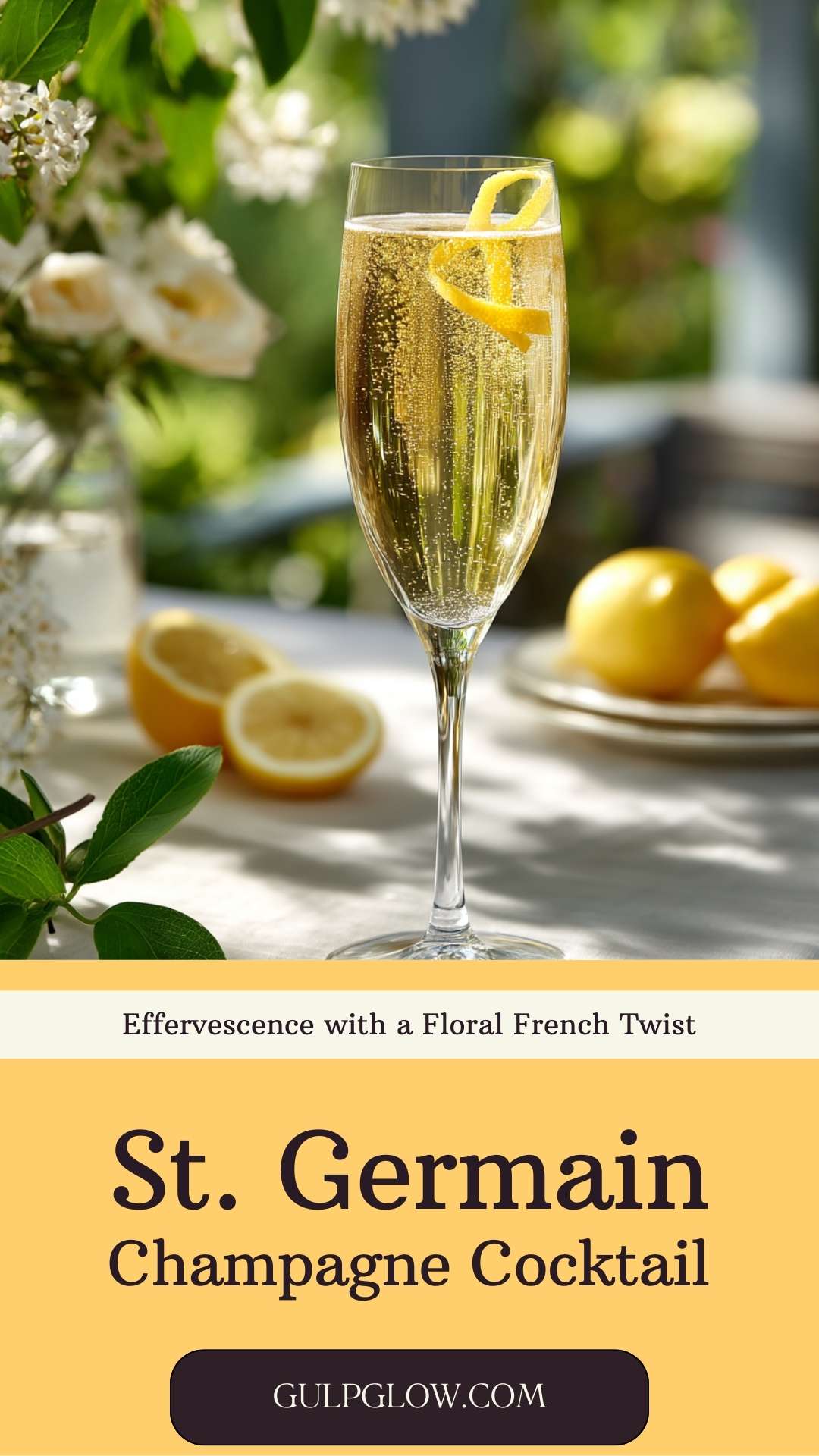
This cocktail always makes me think of garden parties in early spring—white tablecloths, fresh blooms, and soft jazz in the background. I first encountered it at a summer rooftop soirée, where someone handed me a flute filled with fizzing gold and the subtlest hint of flowers. It was love at first sip. And unlike some “pretty” drinks that underdeliver on flavor, this one is beautifully balanced: just the right amount of sweetness, vibrant acidity from the Champagne, and that signature St-Germain elderflower whisper.
What makes this cocktail so appealing is that it feels elevated, but it’s deceptively easy to make. Just two main ingredients and a garnish, but the result is enchanting.
Quick Facts: St-Germain Champagne Cocktail
Method: built
Flavor profile: floral, lightly sweet, sparkling
How to serve it: straight up
Glassware: champagne flute or coupe
Alcohol content: ~ 11–13% ABV, 11–14 grams of alcohol per serving
Ingredients
- 1 oz St-Germain elderflower liqueur
- 4–5 oz brut Champagne (or dry Prosecco or Cava)
- Optional: lemon twist or edible flower for garnish
St-Germain is the centerpiece here—an elderflower liqueur made from hand-picked blossoms in the French Alps. It’s subtly sweet with notes of pear, lychee, and citrus, and it plays beautifully with dry, high-acid sparkling wine.
Champagne is the traditional choice for this cocktail, and brut (dry) is best to avoid making the drink overly sweet. That said, Prosecco or Cava are both excellent alternatives, especially for casual entertaining. If using Prosecco, choose one on the drier end of the scale (brut or extra dry).
Want to dial it up? Add a dash of orange bitters or a splash of gin for a French 75-inspired variation.
Equipment Needed
- Champagne flute or coupe
- Jigger or measuring spoon
- Bar spoon or cocktail pick
- Channel knife or peeler (for garnish)
No shaker or stirrer necessary—the drink is built directly in the glass. Use a jigger for precision, especially with the St-Germain, which can quickly tip the drink too sweet if over-poured.
Chilled glassware is essential. Store flutes in the fridge or fill with ice water before building the cocktail for maximum refreshment.
Step-by-Step Instructions
- Chill your glass: Place your flute or coupe in the freezer or fill it with ice water for a few minutes.
- Add St-Germain: Pour 1 oz of St-Germain into the bottom of the glass.
- Top with Champagne: Slowly pour 4–5 oz of brut Champagne over the liqueur. Let it mix naturally.
- Garnish: Add a lemon twist for brightness or an edible flower for flair.
Avoid stirring—let the bubbles do the work. Pour gently to preserve effervescence and keep the cocktail elegant and airy.
Flavor Profile and Tasting Notes
This cocktail is soft, aromatic, and perfectly balanced. St-Germain brings a delicate floral sweetness with a hint of stone fruit and citrus. The Champagne (or sparkling wine) cuts through with acidity and effervescence, adding structure and a crisp finish.
The mouthfeel is smooth and effervescent, almost like a velvet breeze. It’s incredibly drinkable—light enough to enjoy early in the day or as a pre-dinner toast.
Pair it with fresh, bright dishes: cucumber tea sandwiches, goat cheese canapés, grilled shrimp, or lemony ricotta tart. For dessert, a pear galette or lemon chiffon cake would be exquisite.
Garnishing and Presentation
Simple is best when it comes to garnishing the St-Germain Champagne Cocktail. Let the pale gold color and bubbles take center stage.
- Lemon twist: A classic garnish that enhances the cocktail’s brightness. Express the oils over the surface and drop it in.
- Edible flower: A violet, pansy, or rose petal adds romantic flair—ideal for bridal showers, anniversaries, or spring events.
- Grapes or lychee on a cocktail pick: For a subtle nod to the liqueur’s flavor profile.
Always serve in a tall, narrow flute to retain carbonation and show off the bubbles. For a more vintage, Parisian look, try a wide coupe glass with an ornate stem.
Pairing Suggestions
Thanks to its floral lightness and balanced sweetness, the St-Germain Champagne Cocktail complements:
- Fresh oysters or caviar: Briny richness meets sparkling freshness.
- Herbed goat cheese on crostini: Creamy and tangy with just the right contrast.
- Lemon tarts and macarons: Echoes the citrus and floral notes in the drink.
- Fresh fruit skewers: Pear, melon, and lychee are all great matches.
This is a perfect cocktail for morning or afternoon occasions—elegant without being heavy.
Cocktail History and Trivia
St-Germain liqueur only launched in 2007, but it has already cemented its place in the world of refined cocktails. Created by Robert Cooper, the liqueur is made from fresh elderflower blossoms hand-harvested in the French Alps during a short blooming season in spring. Its vintage-style bottle and soft, aromatic flavor quickly captured the hearts of bartenders and home mixologists alike.
The Champagne Cocktail format, however, is far older—dating back to the 1800s. Traditionally made with sugar, bitters, and sparkling wine, it has evolved over time into a canvas for all kinds of lighter aperitif-style drinks.
This St-Germain version is a modern take on both traditions: a bit French, a bit bubbly, and totally irresistible. It’s the essence of quiet luxury—much like the slow pleasures celebrated in La Dolce Vita or the floral balconies of Montmartre.
Serving Suggestions
Serve the St-Germain Champagne Cocktail at:
- Bridal showers and weddings
- Mother’s Day brunch
- New Year’s Eve toasts
- Spring and summer garden parties
If you’re hosting a crowd, pre-pour the St-Germain into chilled flutes and top with Champagne right before serving. Keep everything as cold as possible to preserve fizz and freshness.
This cocktail is best served immediately—no ice, no stirring, no waiting.
Alcohol Content and Alternatives
With an ABV of around 11–13%, the St-Germain Champagne Cocktail is moderate in strength and perfect for light sipping.
Low-ABV alternative:
Use a sparkling non-alcoholic wine or blend club soda with elderflower cordial. Adjust proportions to taste and garnish as usual.
Mocktail version:
Combine elderflower syrup or cordial (1 oz) with sparkling water and a squeeze of lemon. Serve in a flute with a citrus twist or edible flower for the full effect.
Frequently Asked Questions (FAQ)
Can I use sparkling wine instead of Champagne?
Absolutely. Dry Prosecco or Cava are great substitutes and more affordable. Just keep it brut-style (not sweet).
Is St-Germain very sweet?
It’s subtly sweet with floral notes—not overpowering. The Champagne balances it beautifully.
Can I add gin to make it stronger?
Yes. Add ½ oz of gin for a French 75 variation, but it will become a more potent cocktail.
What if I don’t have a flute?
A coupe glass or white wine glass works in a pinch. Just aim to preserve the bubbles.
Can I batch this cocktail?
It’s best built individually, but you can pour the St-Germain into glasses ahead of time and top with chilled bubbles just before serving.
St. Germain Cocktail Recipe
Ingredients
1 oz St-Germain elderflower liqueur
4–5 oz brut Champagne (or dry sparkling wine)
Garnish: lemon twist or edible flower
Directions
- Chill a flute or coupe glass.
- Pour in 1 oz St-Germain.
- Top with 4–5 oz of chilled sparkling wine.
- Garnish with a lemon twist or edible flower and serve immediately.
Conclusion
The St-Germain Champagne Cocktail is a refined and refreshing way to elevate any occasion—light, floral, and endlessly graceful. It’s the kind of drink that feels like a toast to beauty and joy, best served with good company and plenty of sparkle.
Next time, we’ll explore a bold, spicy cocktail from the golden era of tiki—something with rum, heat, and tropical drama.
